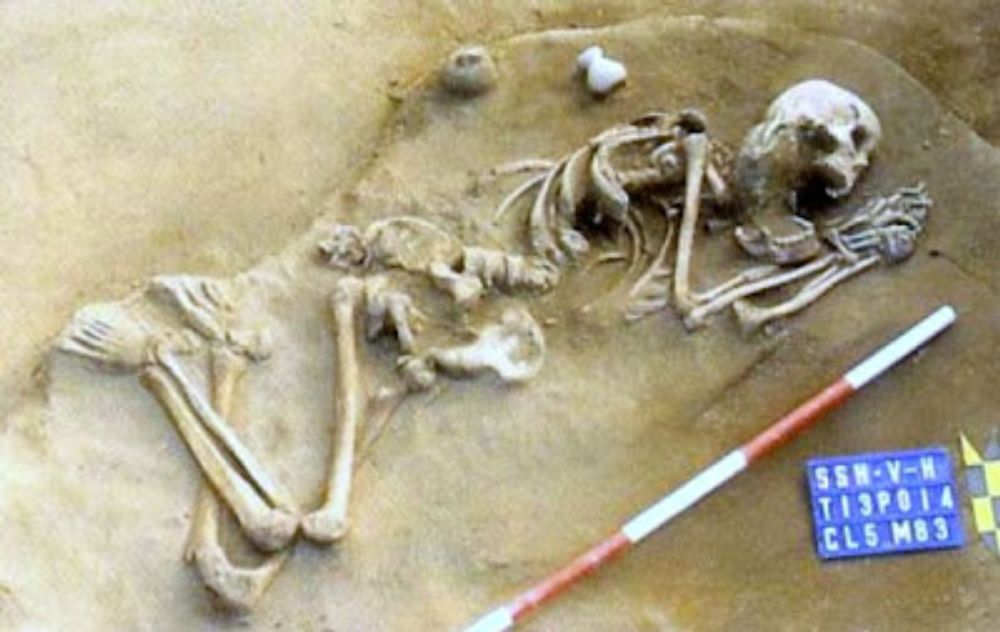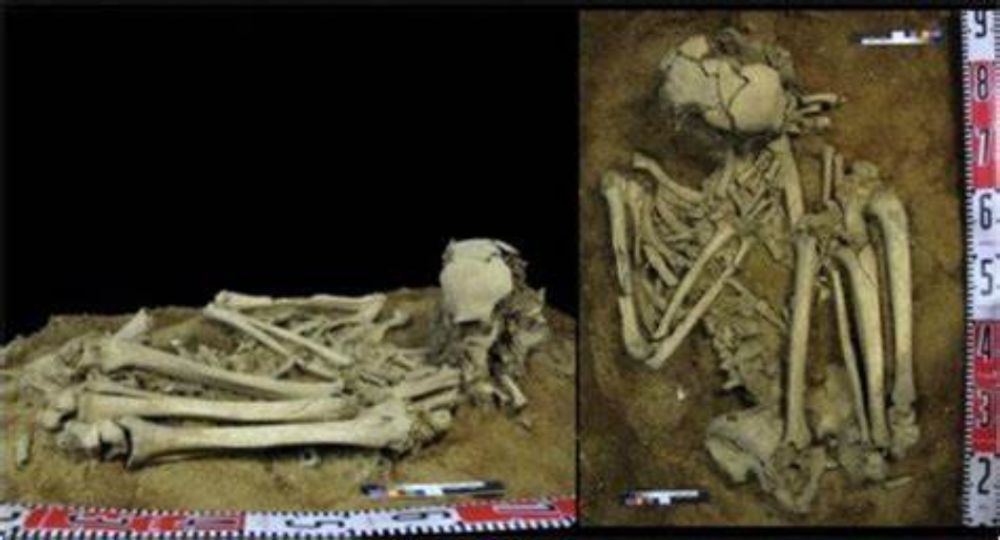

 About 6,000 years ago, Taiwan was settled by Austronesians who brought Neolithic technology and still make up about 2 percent of the island's population. However, 15 of the 16 Austronesian groups on the island have stories of small dark people already living in the forests of the island, and perhaps even until recently, living with the Austronesians.Finding a skull confirms the stories and helps place missing people in the human family tree. The presence of stone tools, some of which proved to be 30,000 years old, proved that the stories of the Austronesians were not simply the same as those of European fairies or elves.However, until now scientists had no way of knowing anything about these first inhabitants. The discovery of a skull and partial skeleton in Xiaoma Cave on Taiwan's east coast changes that.
About 6,000 years ago, Taiwan was settled by Austronesians who brought Neolithic technology and still make up about 2 percent of the island's population. However, 15 of the 16 Austronesian groups on the island have stories of small dark people already living in the forests of the island, and perhaps even until recently, living with the Austronesians.Finding a skull confirms the stories and helps place missing people in the human family tree. The presence of stone tools, some of which proved to be 30,000 years old, proved that the stories of the Austronesians were not simply the same as those of European fairies or elves.However, until now scientists had no way of knowing anything about these first inhabitants. The discovery of a skull and partial skeleton in Xiaoma Cave on Taiwan's east coast changes that.
 In World Archaeology, Australian National University's Dr Hsiao-chun Hung explores what one person's remains can tell us.The Austronesian groups had different opinions about the people who lived next to them. Many describe them in hostile terms and have stories of battles. However, at least four groups tell stories of marrying the so-called "little black men," and one group, the Saisiyat, holds ceremonies to honor those they call Thai, whom they consider their teachers.Although these attitudes varied, all groups had the common physical description of people with dark skin, small body size, and matted hair, often living in caves and forested hills. The skull found in Xiaoma is consistent with those accounts.It was in a layer about 5,900 years old, around the time of the arrival of the Austronesians. However, its features make it clear that it belongs to someone with a different heritage. Not only is the skull smaller, but its shape 13 measures closer to those of the Negrito people of the Philippines, followed by those of the Andaman Islands.
In World Archaeology, Australian National University's Dr Hsiao-chun Hung explores what one person's remains can tell us.The Austronesian groups had different opinions about the people who lived next to them. Many describe them in hostile terms and have stories of battles. However, at least four groups tell stories of marrying the so-called "little black men," and one group, the Saisiyat, holds ceremonies to honor those they call Thai, whom they consider their teachers.Although these attitudes varied, all groups had the common physical description of people with dark skin, small body size, and matted hair, often living in caves and forested hills. The skull found in Xiaoma is consistent with those accounts.It was in a layer about 5,900 years old, around the time of the arrival of the Austronesians. However, its features make it clear that it belongs to someone with a different heritage. Not only is the skull smaller, but its shape 13 measures closer to those of the Negrito people of the Philippines, followed by those of the Andaman Islands.
During the Ice Age, Taiwan was connected to the mainland and the Philippines, and people may have arrived on foot. "So far, no site in Taiwan has been dated to between 15,000 and 6,600 years ago," Hung told IFLScience, suggesting that the Xiaoma people's ancestors may have arrived by boat to an island where their original inhabitants were lost.The authors conclude that the bones are of a female, buried in hunter-gatherer graves in southern China and Southeast Asia, strengthening the connection. Hung told IFLScience that although Taiwan's pre-Neolithic population density was low, "the rarity of human remains found from this period is a reflection of the rarity of preservation at ancient sites thousands of years later."” She attributes this primarily to the climate. Hung added that archeologists have not paid close attention to ancient burial sites, and hope to rectify this. Hung told IFLScience that flake tools used by hunter-gatherers elsewhere in Southeast Asia arrived in Taiwan about 7,000 years ago, possibly with contact with fishermen in Luzon.The Taiwanese versions are smaller and benefit from the higher quality stones available. Records from the Qing indicate that the original inhabitants lived as a distinct people as early as two centuries ago. Even today they may not be completely gone.Genetic analysts have contacted Hung and told her they believe there is evidence for their DNA among modern Austronesians. The cave where the skull was found is 800 meters (half a mile) from the sea, but co-author Dr. Mike Carson of the University of Guam told IFLScience, "[Taiwan's] east coast ridge is among the fastest-moving geological formations in the world."” When the person was buried there, the site was close to the sea and a nearby river, which would have provided the inhabitants with fresh water and a close source of food.


